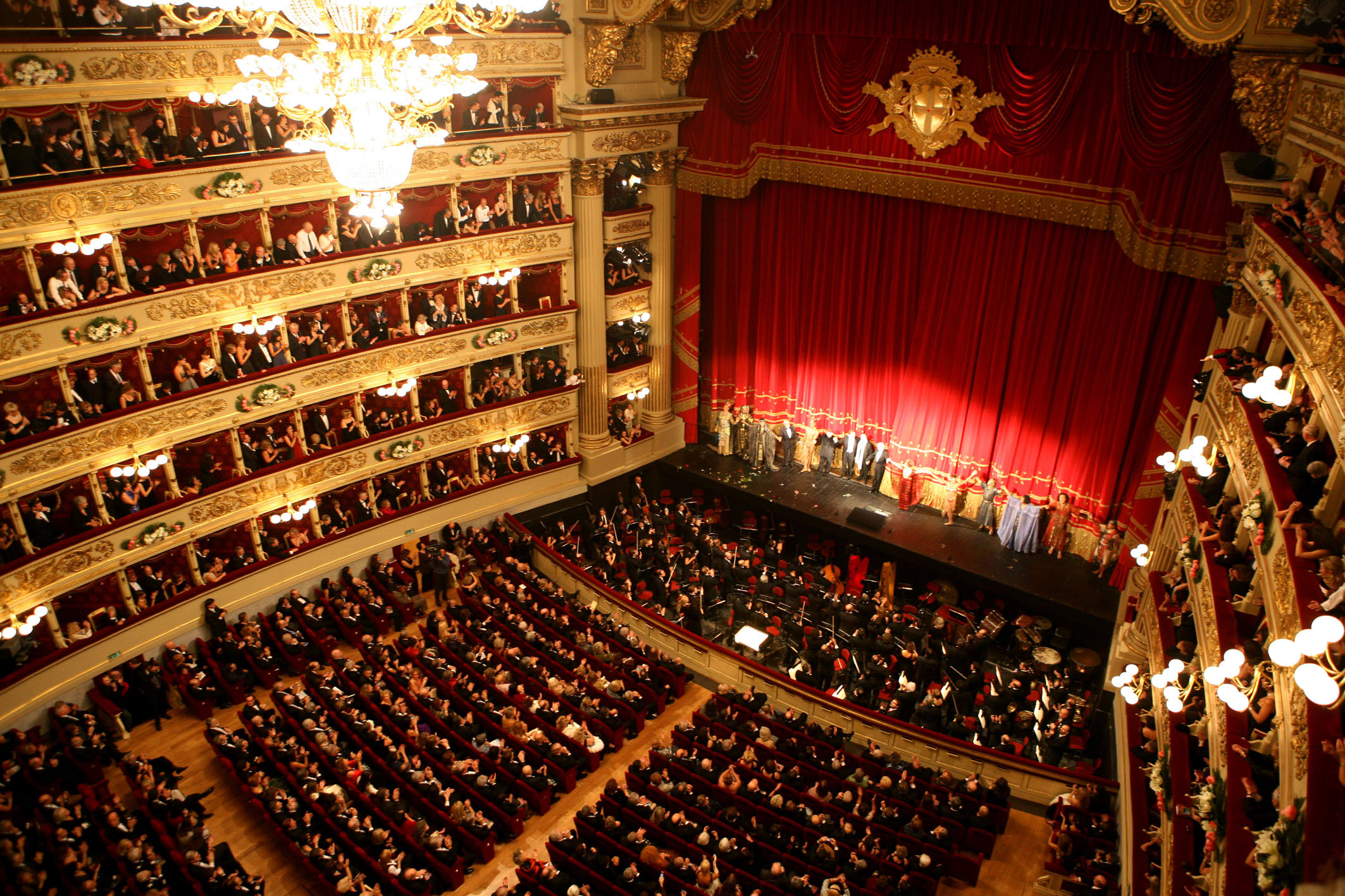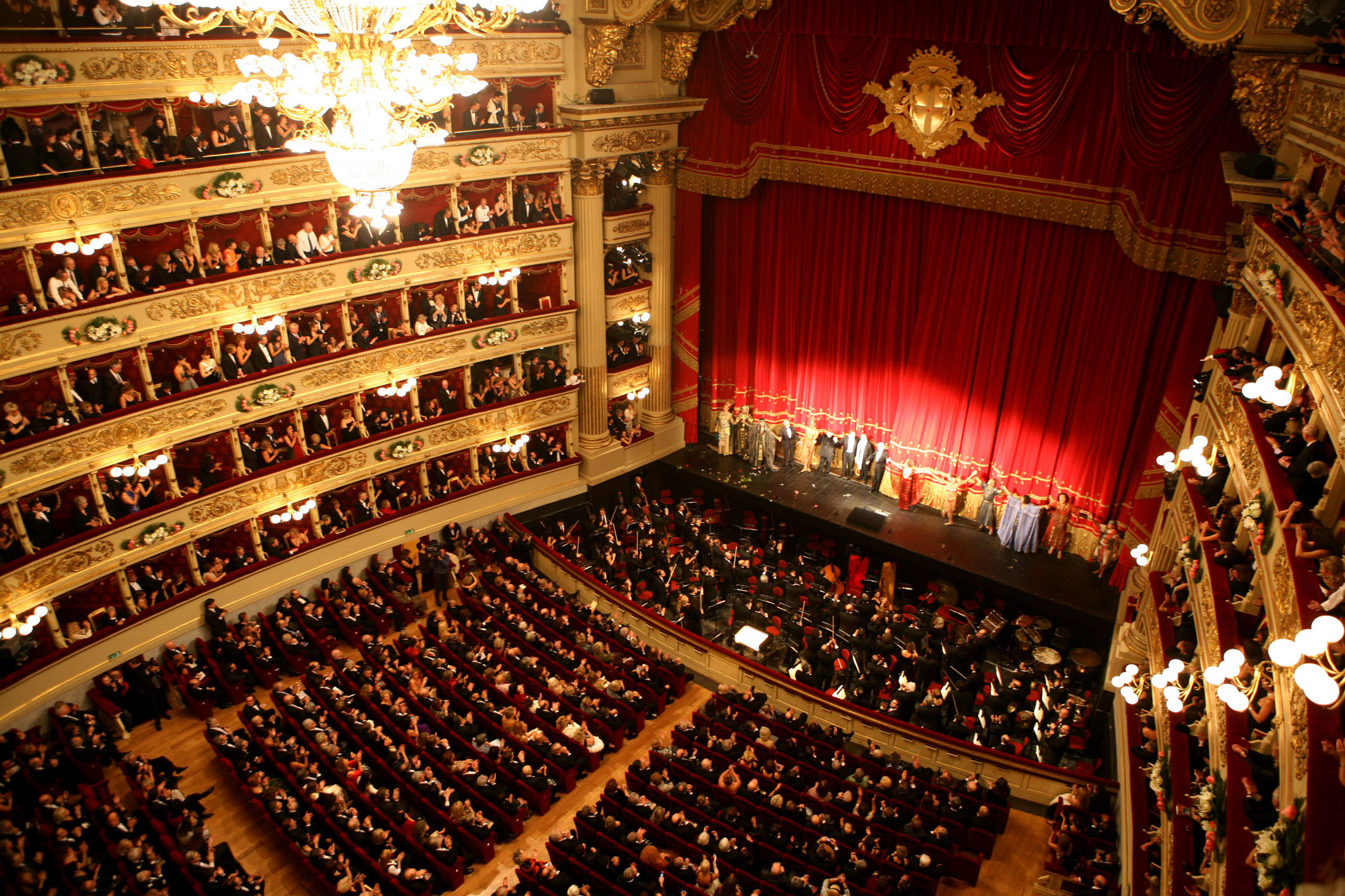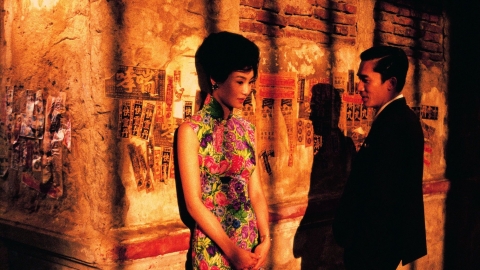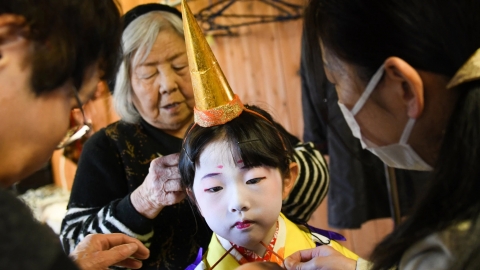The fluctuations
As an iconic building of Moscow, the Bolshoi Theatre has been through many ups and downs. It has been repeatedly burned down, rebuilt numerous times and has undergone many regime changes in Russia. However, to this day, it is still considered one of the oldest and greatest theatres in the world.
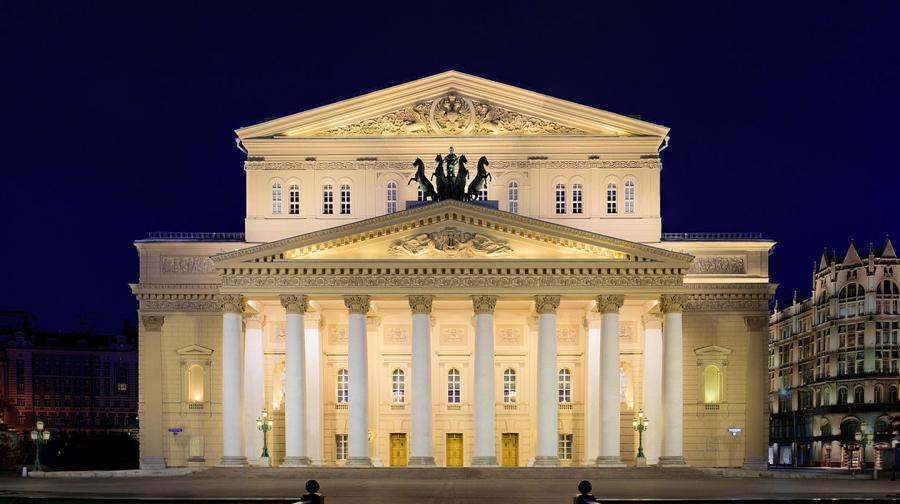
The exterior of the Bolshoi Theatre
In March 1776, with the permission of Empress Catherine II the Great, Prince Pyotr Urusov began building the Bolshoi Theatre with the aim of beautifying the city as well as serving the people's need for cultural and artistic enjoyment. Unfortunately, the newly built building burned down and the project was handed over to Michael Maddox, a mathematician and businessman in the field of theater.
Despite the success of the construction, Michael Maddox went 50,000 rubles over budget and could not get out of debt. As a result, the board of directors entrusted Prince Volkonsky with the responsibility of managing the theater.
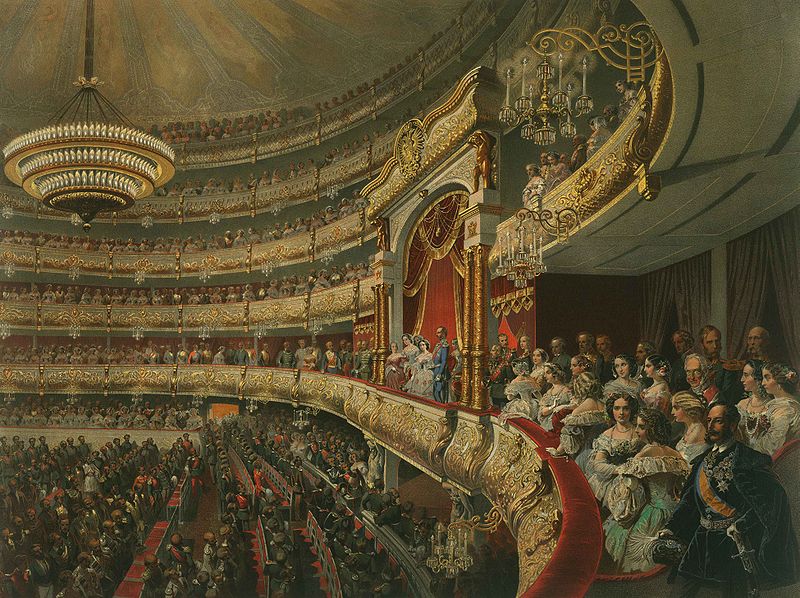
Performance at the Bolshoi Theatre (1856)
After the Patriotic War of 1812, another Russian architect of Italian descent, Joseph Bove, was chosen to oversee the reconstruction of the Bolshoi Theatre. He used only the remaining wall of Maddox’s work to create the 37-meter-high structure that stands today. In 1824, the theatre resurrected from the ruins opened with the play “Triumph of the Muses,” introducing the legend of Russian Romanticism, Pavel Mochalov.
When the structure was again hit by fire in 1805, the Italian-born Russian architect Carlo Rossi built a new wooden building to replace the old one on Arbatskaya Square. However, it too burned down in the Great Fire of Moscow in 1812.
The architects then built a new art building on the site. The new Bolshoi Theatre survived another major fire in 1853.
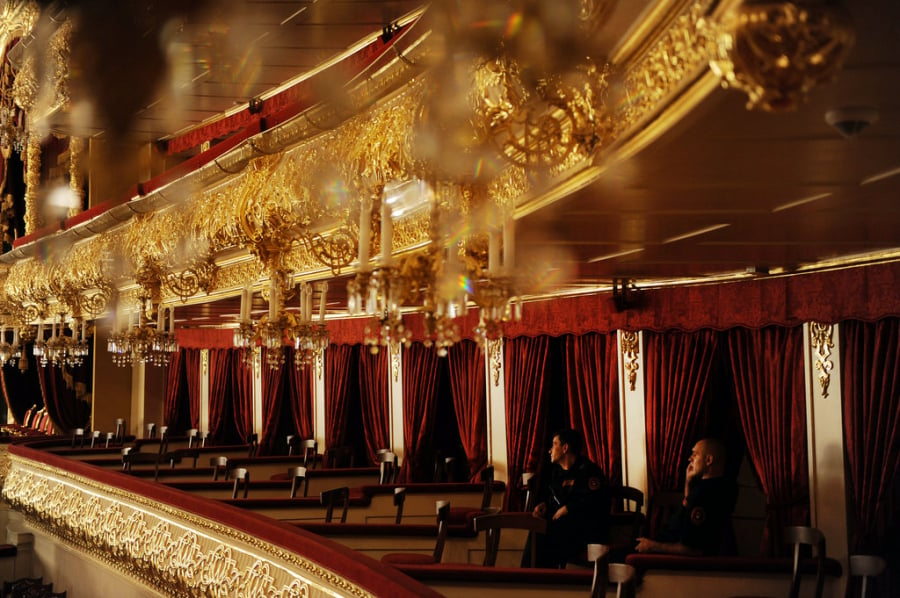
Two theater security guards are watching a rehearsal for a ballet.
Through 200 years of history with many ups and downs, this place has been associated with famous artists in the music world as well as ballet. In 2005, the Russian government decided to restore the theater and upgrade the sound and lighting system while renewing the old interior equipment.
Elements of the original Imperial Russian design were gradually restored. The building's foundations and supporting structures were completely reworked. Improvements to the theater's acoustics were also made. French and Soviet cultural elements were removed.

The new stage curtain is about 20 meters high and weighs nearly 900 kg.
The furniture and decorative arts were covered in precious pine and gilded instead of cement and bronze as before. The tapestries were rewoven, the glass in the giant two-ton chandelier was replaced or repaired, and the balconies were covered in gold leaf. In total, more than 5 kg of gold was used for 150 gilded works inside the theater.
The old stage curtain with Soviet-style decorations was removed, replaced by a new curtain about 20 meters high and weighing nearly 900 kg, with the abbreviation of the Russian Federation and the eagle motif as it was in place since 1856.
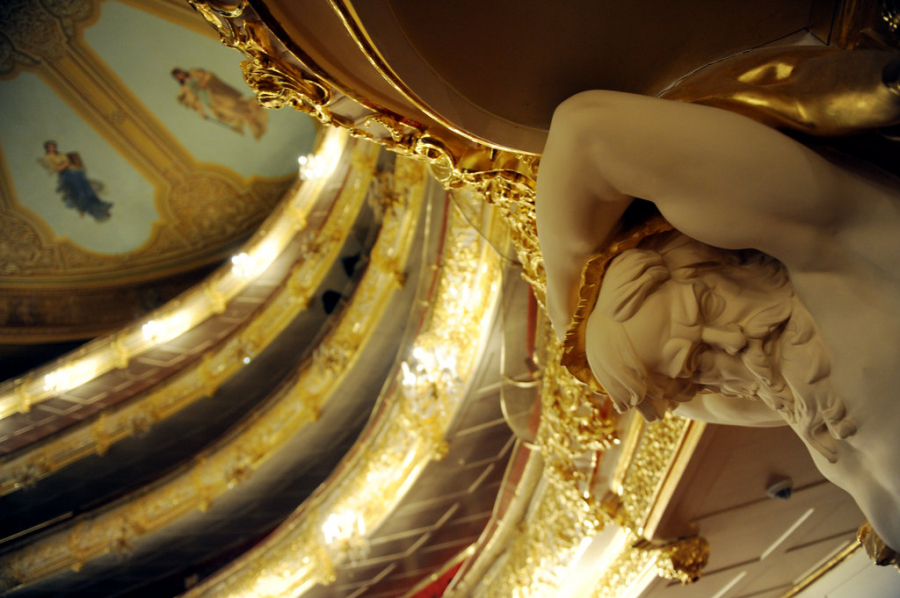
Columns and domes inside the theater
After six years of restoration and upgrading costing nearly 25.5 billion rubles (700 million USD), the Bolshoi Theatre reopened on October 28, 2011.
Interesting facts
Despite the upheavals, the history of the Bolshoi Theatre is also quite interesting. Maddox’s Bolshoi Theatre had a 1,000-seat auditorium, a stage, and an orchestra pit. Directly above the stage were boxes where “concert lovers” sat, most of whom were aristocrats.
They also gave signals to certain “audiences.” For example, if they held up two fingers, everyone had to cheer. These nobles could be considered masters of the “chords,” or people hired to clap at certain points in the performance.

Scene from Giuseppe Verdi's opera Aida (1957)
The first Bolshoi Theatre troupe consisted of only 42 people, including 8 actresses, 13 actors, 13 musicians, three male dancers and 4 female dancers.
Tsar Alexander III and his family considered the Bolshoi Theatre one of their favorite places. They often came here to see new ballets and operas despite the fact that the capital of Russia and the Imperial Palace at that time was in St. Petersburg.
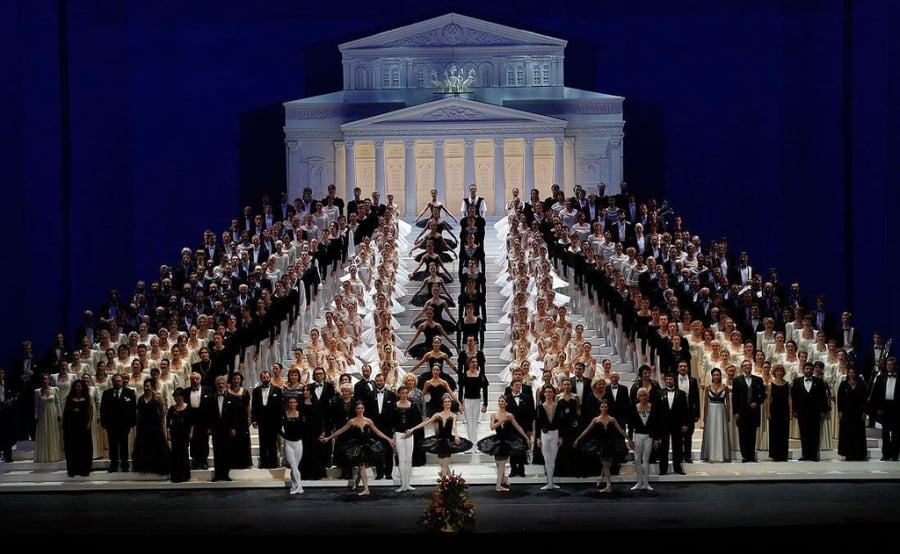
Performance on the occasion of the Bolshoi Theatre's reopening in 2011
During World War II, the Bolshoi Theatre, like many other iconic buildings in Moscow, was disguised as an ordinary house. In this way, the authorities tried to protect the monument from bombings.
Every year, the Moscow authorities plant new tulips in front of the Bolshoi Theatre. This tradition was started by a Dutchman named Lefeber. After his first visit to the theatre in the 1950s, Lefeber was so impressed by the performance of the Russian ballet dancers that he gave the theatre two new tulip varieties, named “Bolshoi Theatre” and “Galina Ulanova” (named after a famous Russian ballerina).
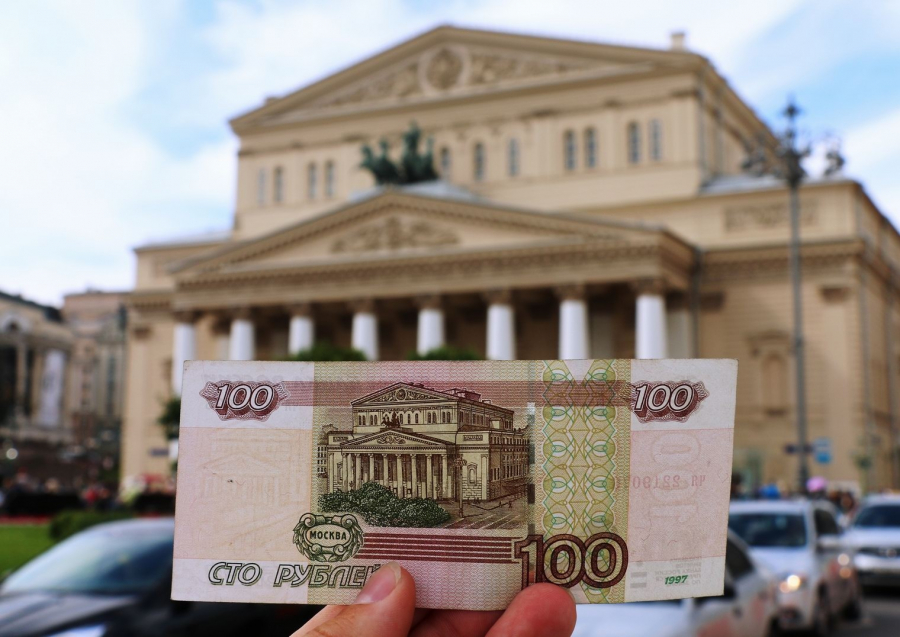
The Bolshoi Theatre is also illustrated on the Russian 100-ruble note, issued in 1997.
During the theater's long history, the stage has featured over 700 ballet dancers, actors, and opera singers.
The scandals
In 2013, the Bolshoi shocked Russia with an acid attack on Sergei Filin, its artistic director. After the incident, Filin revealed the dark side of the theater beneath its glitz.
The cause of the attack could be due to internal conflicts within the theater, fights for roles and this situation is not something new, it has existed for decades.
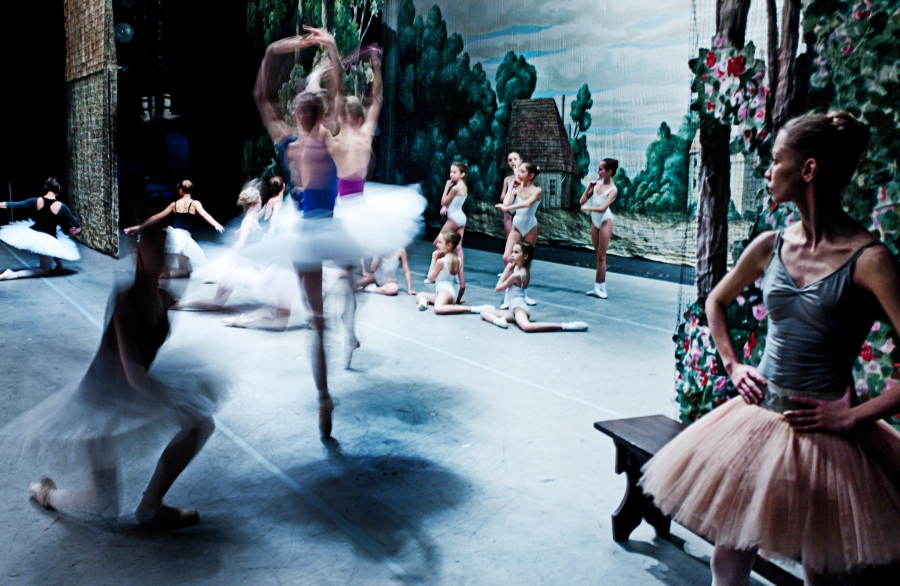
A rehearsal at the Bolshoi Theatre, a month after the attack on Sergei Filin
Also in 2013, Anastasia Volochkova, a former Boshoi star who was fired in 2003 on grounds of being too large, spoke out against the theater as a “big brothel” where young ballerinas were often forced to attend dinner parties and have sex with wealthy patrons.
In response, the theater's general director, Anatoly Iksanov, asserted that Volochkova's accusations were "filthy and crazy" and completely baseless.





